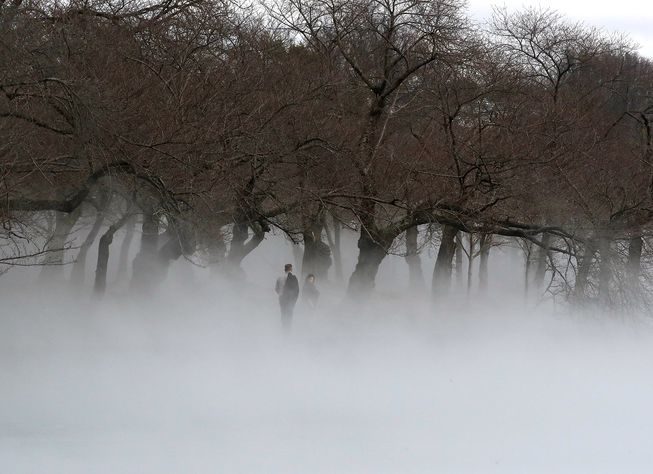
A 'capped inversion' trapped air pollutants near the ground
Despite a steep downward trend in the number of days with poor air quality over the last several years, residents of Washington, D.C., and Baltimore awoke Feb. 4 to thick haze and warnings about unhealthy levels of air pollution. As a result, authorities issued a code-orange alert, urging sensitive groups such as children, the elderly and those with asthma, heart disease or lung disease to limit outdoor activities.
Why would a region used to grappling with air-quality alerts in the muggy days of summer find itself stuck with one in the middle of winter? The cause is a weather phenomenon called a "capped inversion," which under the right conditions prevents ground-based pollutants from drifting away into the upper atmosphere.
Nowhere to go
Normally, air is warmest near the surface and cools as it rises through the atmosphere. In this scenario, air pollutants are emitted and able to mix and spread through this unstable mass of air flowing between warm and cool areas.
A capped inversion occurs when a less dense mass of warm air moves over a dense, cold mass. In the case of the Washington-Baltimore region, a recent cold spell and fresh snowfall on Feb. 1, coupled with the arrival of extremely warm air over the weekend (high temperatures on Feb. 4 reached nearly 65 degrees Fahrenheit, or 18 Celsius), created ideal inversion conditions. As a result, any pollutants emitted during that time stayed close to the ground, elevating the level of particulates in the air and triggering a code-orange alert.
"The fresh snow traps cold air near the surface very well," Joel Dreessen, a meteorologist with Maryland's Department of Environment, said in an email to the Washington Post. "Particles jumped dramatically Saturday (in comparison to Friday) due to the inversion which set up. This very stout near-surface inversion was/is in place through Monday due to ongoing high pressure in the region."
A deadly legacy
While air inversions in U.S. urban environments today are manageable thanks to clean-air policies and regulation, their impact on communities decades ago could sometimes turn deadly. In the Steel Belt town of Donora, Pennsylvania, in 1948, a temperature inversion trapped a mass of toxic smog over the region for five days, claiming 20 lives and causing respiratory problems for more than 6,000. A similar four-day weather phenomenon in 1952 over London sickened more than 100,000 and claimed the lives of an estimated 10,000 to 12,000 people.
"The air was not only dark, tinged with yellow, but stank of rotten eggs," the BBC recounted. "Those who ventured out into the soot-choked air recall returning home with their faces and clothes - even petticoats - blackened. Some were bought to their knees, coughing uncontrollably."
Relief on the way
Winter inversions fortunately are relatively rare, with Dreessen noting that the Washington-Baltimore region has only experienced three total since 2014. This latest one has also begun to weaken, with cleaner air likely later in the week as a cold front passes through. The best thing we can do to limit their impacts - in particular if climate change increases their frequency - is to pass stricter air-quality laws that better protect citizens during such weather events.



Reader Comments